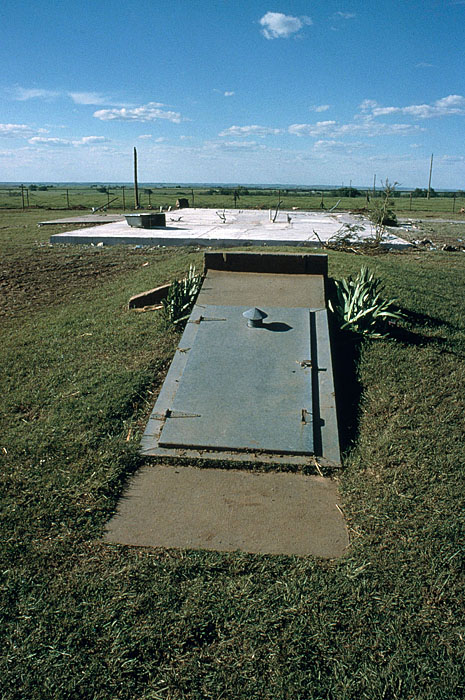Tornado Stock Photos and Stock Illustrations
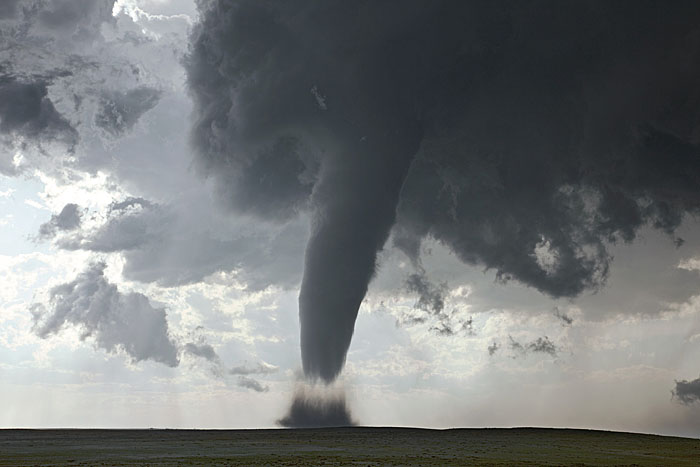
SR6615 Tornado on the Great Plains of the USA. A tornado is a rapidly rotating funnel of air that can form below certain types of storm clouds. High wind speeds within the rotating funnel can cause immense destruction. This tornado was produced from a supercell thunderstorm. Photographed near Campo, Colorado, USA, on 31 May 2010.
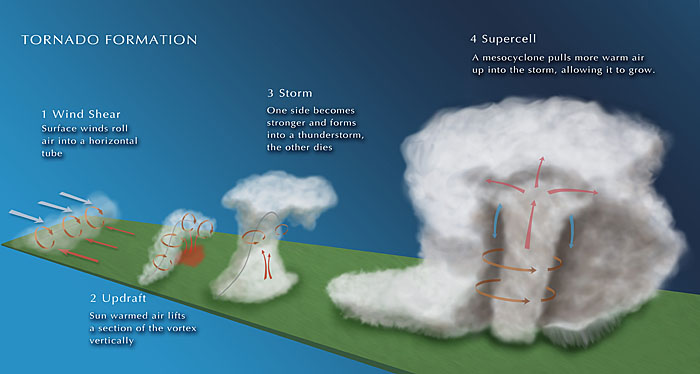
BZ9058 - Illustration of the formation of a tornado. (1) A wind shear forms; surface winds roll air into a horizontal tube. (2) Updraft; Sun warmed air lifts a section of the vortex vertically. (3) A storm forms; one side of the vortex becomes stronger and forms into a thunderstorm, while the other side dies. (4) Supercell; A mesocyclone pulls more warm air up into the storm, allowing it to grow. The spin then intensifies and a rotating column of air will break through the wall cloud and hit the ground.
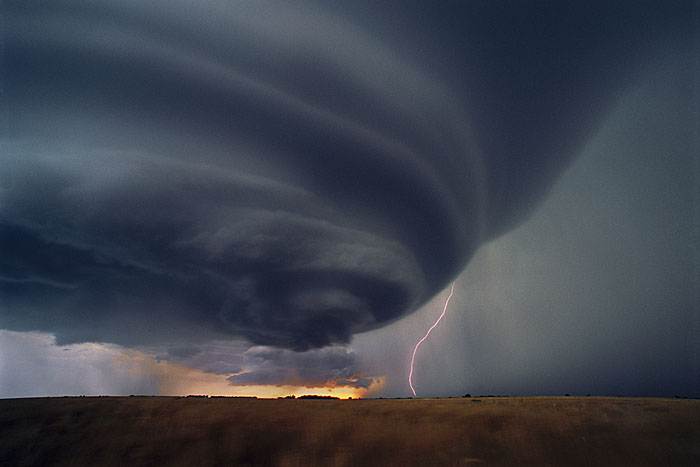
BC3706 - A lone lightning bolt strikes the ground beneath an isolated supercell thunderstorm at sunset. The flying saucer-shaped severe cell produced baseball-sized hailstones.
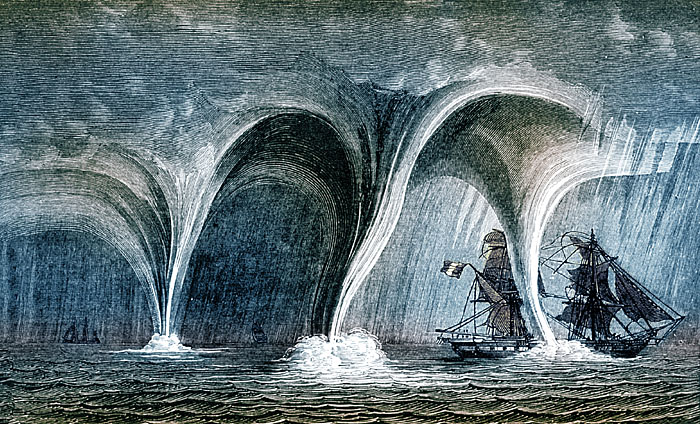
BX4729 - "Trombes" A sailing vessel in peril from multiple waterspouts In: "Les Meteores", Margolle et Zurcher, 3rd Edition, 1869. A waterspout is a tornado occurring over water that forms a column of water and mist extending between the surface and the clouds above. Waterspouts have a five-part life cycle: formation of a dark spot on the water surface, spiral pattern on the water surface, formation of a spray ring, development of the visible condensation funnel, and ultimately decay.
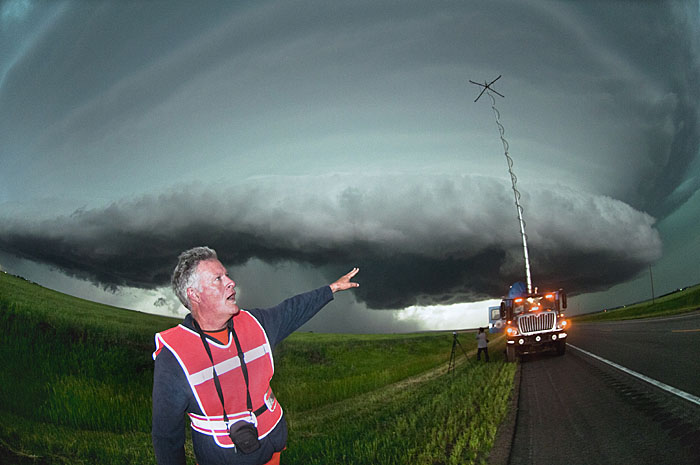
BU9910 - Herbert Stein, tornado researcher and driver of the Doppler on Wheels (DOW) portable weather radar truck, gestures toward a rapidly approaching supercell thunderstorm in western Nebraska on June 6, 2010. The DOW played a crucial role in the success of VORTEX 2, an unprecedented two-year science project to study tornadoes in the United States in 2009 and 2010.
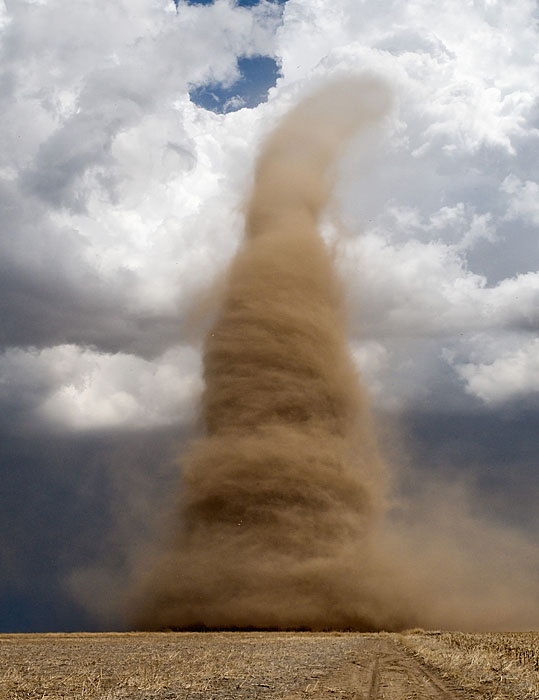
BL6505 - A rare, close-range photo of a landspout tornado, filled with swirling dirt, churning magnificently across a rural landscape in western Kansas on May 8, 2008. The photographer captured this image within 150 feet of the twister.

SC4954. Dirt-filled tornado moving across farmland. A tornado is a violent, rotating column of air characterised by a funnel-shaped cloud, formed within severe thunderstorm clouds. A tornado can be up to 100 metres in diameter and can cause widespread devastation. Wind speeds of over 500 kilometres per hour have been reported in tornadoes. Tornadoes are most common in the mid- west USA. Photographed in Kansas, USA.
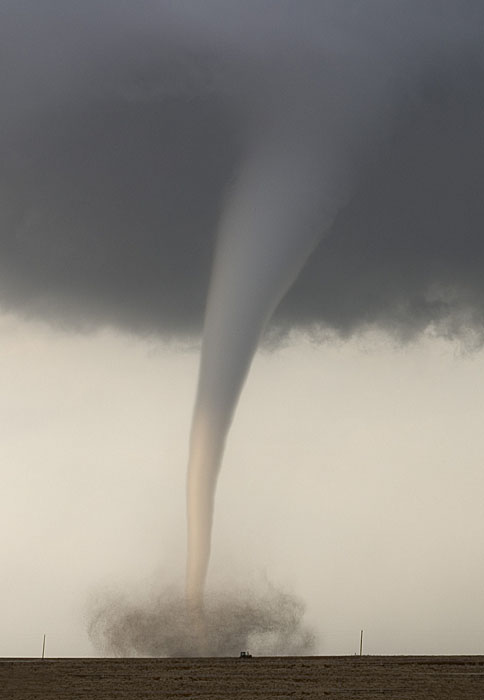
BC3743. A tornado backlit by the setting sun creates a dirt-filled debris cloud as the twister churns across rural farmland in Kansas. Note the size of the farm tractor near the debris cloud.
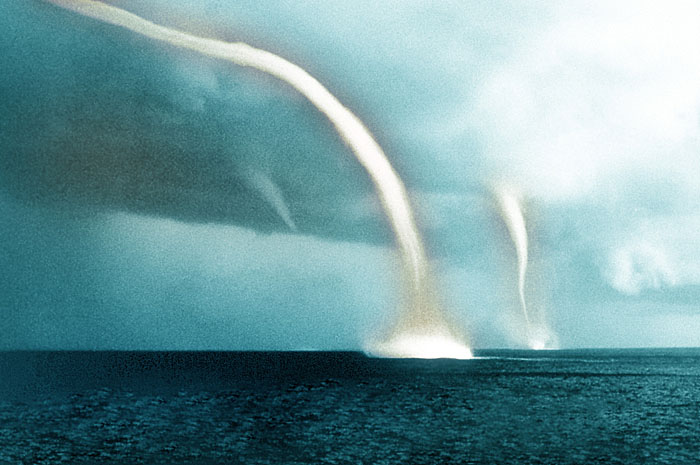
BX4732 - Multiple waterspouts off the Bahamas Islands. No date given. A waterspout is a tornado occurring over water that forms a column of water and mist extending between the surface and the clouds above. Waterspouts have a five-part life cycle: formation of a dark spot on the water surface, spiral pattern on the water surface, formation of a spray ring, development of the visible condensation funnel, and ultimately decay.
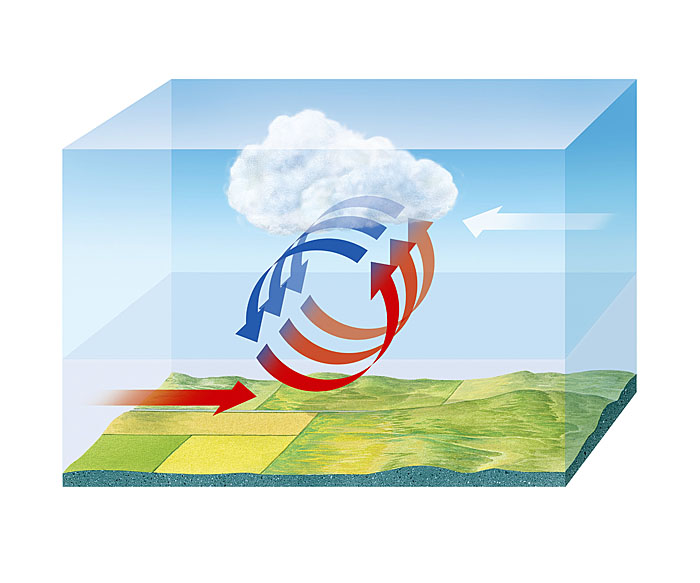
SL8760 - Tornado formation, computer artwork. Image 1 of 4. Tornados develop from intense thunderstorms that begin to spin because high-level winds are blowing faster and in a different direction to low-level winds. The rotation can be enhanced by the interaction of cold and warm air currents (red and blue arrows). This forms a mesocyclone, a powerful air column that moves upward at the center of the storm. The spin then intensifies and a rotating column of air will break through the wall cloud and hit the ground. Large and powerful tornados can have wind speeds of over 200 kilometers per hour, causing immense destruction. For a series showing tornado formation, see images SL8760, SL8761, SL8762, & SL8763.





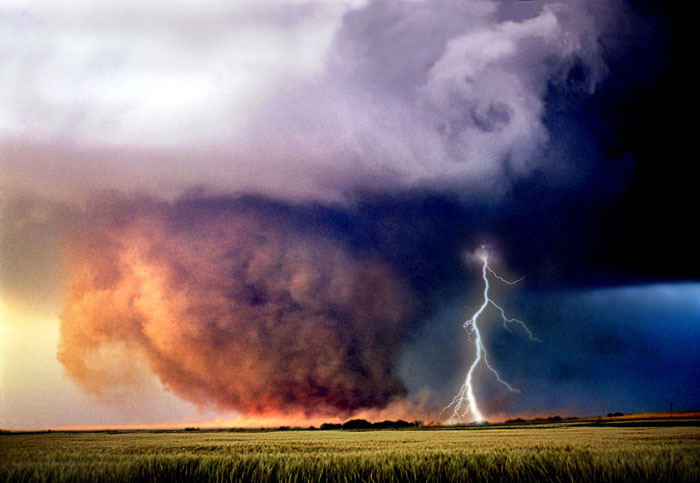



Science Source provides many high-quality stock photos, historical etchings, and contemporary diagrams on tornados and related weather phenomena. Our extensive library encompasses images capturing the power and beauty of tornados, along with historical etchings that offer a glimpse into the past understanding of these atmospheric events. Our diagrams and illustrations provide valuable insights into tornado formation, behavior, and impact.

